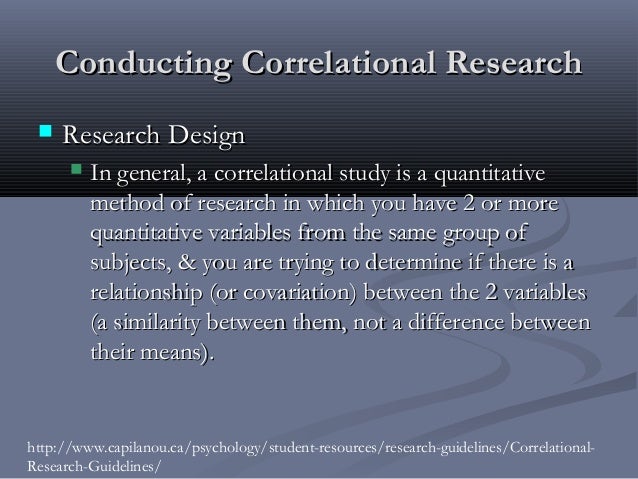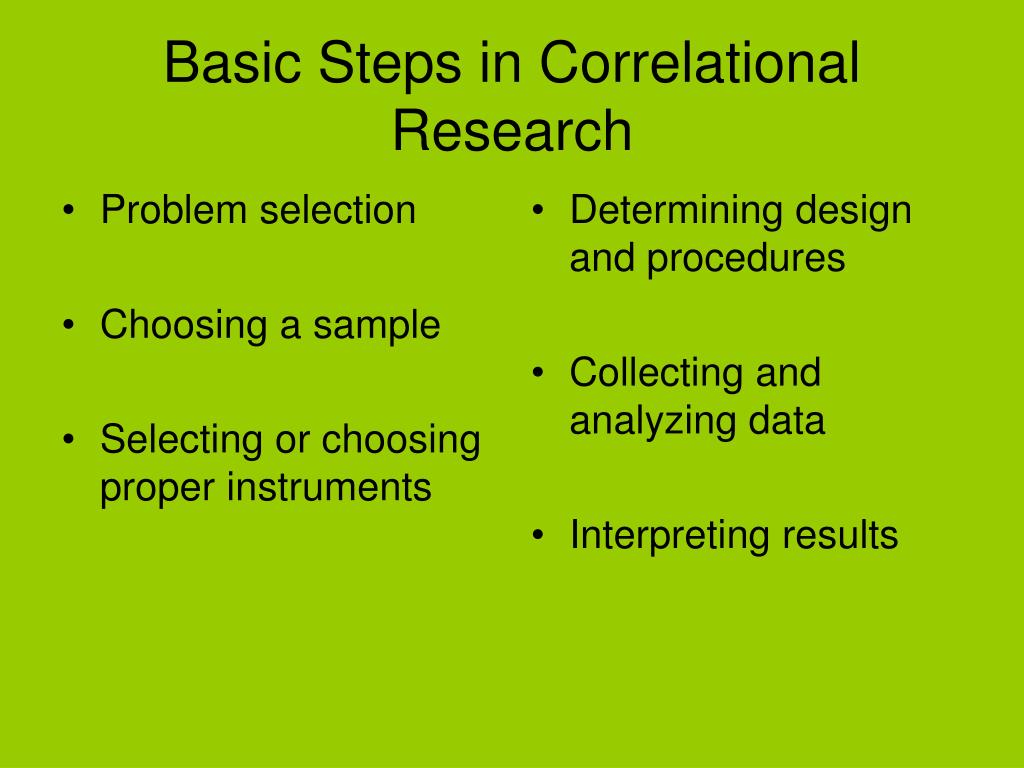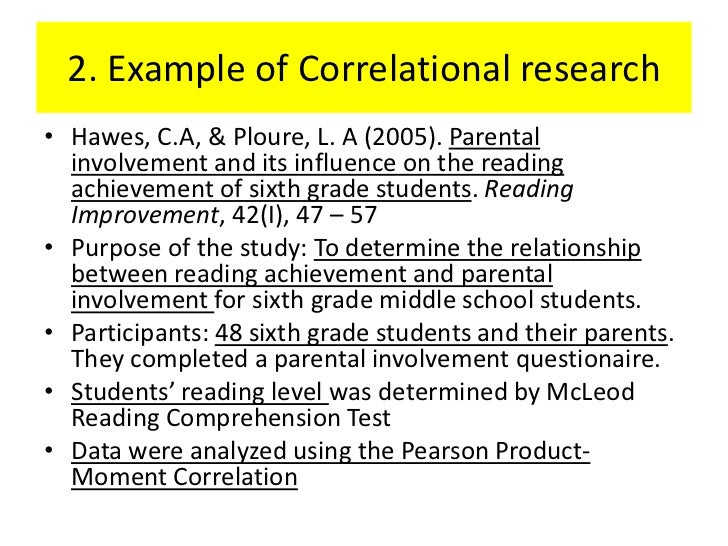Table Of Content

Perhaps being happy gives people more energy or leads them to seek opportunities to socialize with others by going to the gym. The second reason that correlation does not imply causation is called the third-variable problem. Two variables, X and Y, can be statistically related not because X causes Y, or because Y causes X, but because some third variable, Z, causes both X and Y.
Data Collection in Correlational Research
In addition, the researcher would be able to reach out to more survey respondents than is plausible with printed correlational research survey forms. You think that how much people earn hardly determines the number of children that they have. Yet, carrying out correlational research on both variables could reveal any correlational relationship that exists between them. Archival data is a type of correlational research method that involves making use of already gathered information about the variables in correlational research. Since this method involves using data that is already gathered and analyzed, it is usually straight to the point. Essentially, there are 3 types of correlational research which are positive correlational research, negative correlational research, and no correlational research.
Examples of Correlational Research
Correlational research is something that we do every day; think about how you establish a connection between the doorbell ringing at a particular time and the milkman’s arrival. As such, it is expedient to understand the different types of correlational research that are available and more importantly, how to go about it. A human mind is a powerful tool that allows you to sift through seemingly unrelated variables and establish a connection with regards to a specific subject at hand.
4. Case Examples

While correlational studies can identify relationships between variables, they cannot determine causality. This is because correlation merely describes the degree to which two variables co-vary; it does not establish a cause-and-effect relationship between them. Meta-analysis involves combining and analyzing the results of multiple studies to explore the relationships between variables across different contexts and populations. Meta-analysis is useful for identifying patterns and inconsistencies in the literature and can provide insights into the strength and direction of relationships between variables. The 3 methods of data collection in correlational research are naturalistic observation method, archival data method, and the survey method. For example, a marketing correlational study might explore the relationship between social media engagement and brand loyalty among millennials.
(PDF) July-Decmber 2023 Correlational Study on Sleep Habits and Academic Performance Among College Students - ResearchGate
(PDF) July-Decmber 2023 Correlational Study on Sleep Habits and Academic Performance Among College Students.
Posted: Wed, 28 Feb 2024 06:39:19 GMT [source]
When the observations require a judgment on the part of the observers—as in Kraut and Johnston’s study—this process is often described as coding. The observers then categorize participants individually in terms of which behavior they have engaged in and the number of times they engaged in each behavior. The target behaviors must be defined in such a way that different observers code them in the same way. Researchers are expected to demonstrate the interrater reliability of their coding procedure by having multiple raters code the same behaviors independently and then showing that the different observers are in close agreement.
Social Psychology Research Methods - Verywell Mind
Social Psychology Research Methods.
Posted: Mon, 06 Nov 2023 08:00:00 GMT [source]
Archival Data
You might statistically control for these variables, but you can’t say for certain that lower working hours reduce stress because other variables may complicate the relationship. This method often involves recording, counting, describing, and categorising actions and events. Naturalistic observation can include both qualitative and quantitative elements, but to assess correlation, you collect data that can be analysed quantitatively (e.g., frequencies, durations, scales, and amounts). To validate this scale, you need to test whether it’s actually measuring loneliness.
It involves random sampling of the variables or the subjects in the research in which the participants fill a questionnaire centered on the subjects of interest. Zero correlational research caters for variables with vague statistical relationships. For example, wealth and patience can be variables under zero correlational research because they are statistically independent. There are two common situations in which the value of Pearson’s r can be misleading.

What is Causation?
For example, a researcher might evaluate the validity of a brief extraversion test by administering it to a large group of participants along with a longer extraversion test that has already been shown to be valid. This researcher might then check to see whether participants’ scores on the brief test are strongly correlated with their scores on the longer one. Neither test score is thought to cause the other, so there is no independent variable to manipulate. In fact, the terms independent variable and dependent variable do not apply to this kind of research. In fact, the terms independent variable and dependent variable do not apply to this kind of research.
There are many reasons that researchers interested in statistical relationships between variables would choose to conduct a correlational study rather than an experiment. The first is that they do not believe that the statistical relationship is a causal one or are not interested in causal relationships. Recall two goals of science are to describe and to predict and the correlational research strategy allows researchers to achieve both of these goals.
When the correlation coefficient is close to +1, there is a positive correlation between the two variables. If the value is relative to -1, there is a negative correlation between the two variables. When the value is close to zero, then there is no relationship between the two variables. The purpose of correlational research is to examine the relationship between two or more variables.
For example, instead of simply measuring how much people exercise, a researcher could bring people into a laboratory and randomly assign half of them to run on a treadmill for 15 minutes and the rest to sit on a couch for 15 minutes. Although this seems like a minor change to the research design, it is extremely important. Now if the exercisers end up in more positive moods than those who did not exercise, it cannot be because their moods affected how much they exercised (because it was the researcher who used random assignment to determine how much they exercised). Likewise, it cannot be because some third variable (e.g., physical health) affected both how much they exercised and what mood they were in. Thus experiments eliminate the directionality and third-variable problems and allow researchers to draw firm conclusions about causal relationships. Now if the exercisers end up in more positive moods than those who did not exercise, it cannot be because their moods affected how much they exercised (because it was the researcher who determined how much they exercised).
No comments:
Post a Comment